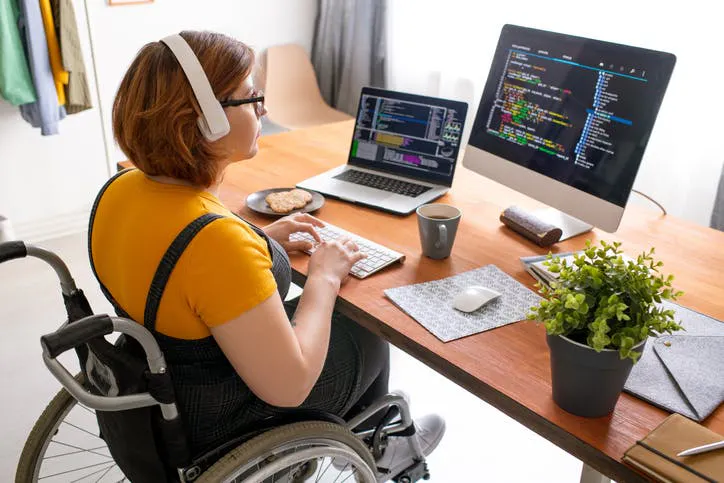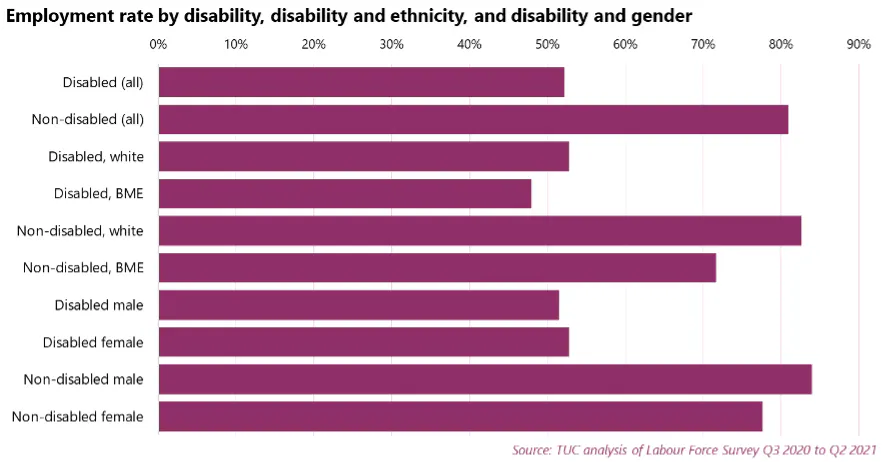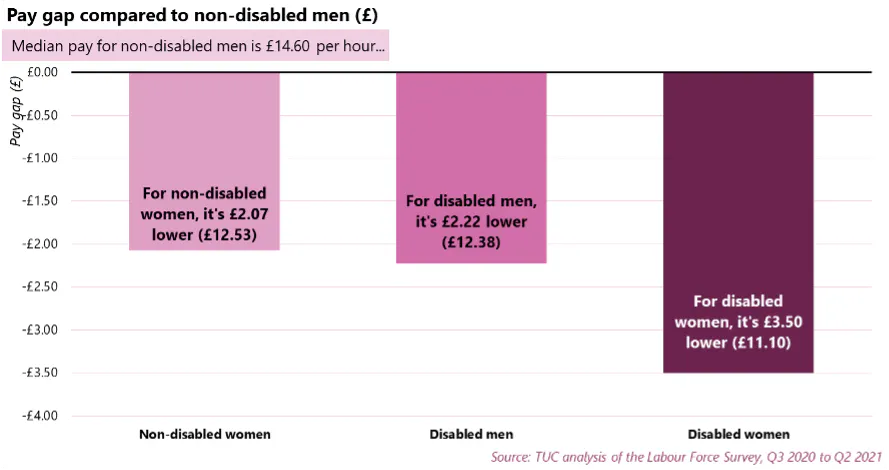Is there a disability pay gap?
On Tuesday, Trades Union Congress (TUC) reported that there is a significant gap in pay between disabled and non-disabled workers.
This news has surfaced at the same time as living expenses are rising; fuel and petrol prices have skyrocketed, the energy price cap was introduced just as the weather is turning and the £20 Universal Credit uplift has ended.
But why is there a disability pay gap, what causes it and what are the repercussions?

What is the pay gap?
The gap is the difference between what disabled people and non-disabled people receive in pay, when in employment. As it stands, the gap is currently £3,458 per year, according to a report from TUC released on 9 November 2021. The date has been branded the "Disability Pay Gap Day 2021"—when disabled people essentially stop getting paid and continue to work for free, for the remainder of the year.
According to the Office for National Statistics (Opens in a new window) (ONS), there are 8.4 million people in the UK aged between 16-24 who are disabled—yet only 4.4 million in employment (20% of the working-age population). This means that roughly half of disabled people are in work, compared to 80% of non-disabled workers—a gap of nearly 30 percentage points.
Not only is there a gap in those who are employed—the survey (Opens in a new window)brought to light that non-disabled workers get an extra 16.5% per year, based on a 35 hour week or £1.90 an hour.
What causes the disability pay gap?

TUCs research showed how disabled workers’ living standards have been “hit hardest” by COVID-19. Every two out of five (40%) disabled workers have faced some sort of financial difficulty during the pandemic, whereas this was only the case for one in four (27%) non-disabled workers.
What exactly causes the pay and employment gaps?
Considering living costs are £583 more on average as stated by disability equality charity Scope (Opens in a new window), the pay gap contributes massively to financial concerns.
Louise Rubin, Head of Policy at disability equality charity Scope, says: “The pandemic has turned the financial screw-on disabled people. We know that life costs more if you are disabled, and it’s completely unacceptable that disabled people continue to be underpaid and undervalued.”
There are more people in part-time work, which pays less per hour. Disabled people are over-represented in lower-paid jobs such as caring and customer services. Also, some leave education earlier resulting in fewer qualifications.
Out of the 2,134 workers in England and Wales that were surveyed, 22% were twice as concerned about losing their jobs than non-disabled people (11%).
Louise adds: “At the very least we need to do everything we can to make sure disabled people thrive in work.”
On top of this, the research found that:
One-in-six (16%) said that they had experienced increased levels of debt
Three-in-ten (28%) had to cut back on spending compared to one-in-five (18%)
Six percent of disabled workers were twice as likely to have had to use a food bank
ONS has worked out what exactly the pay gap of £3,458 is equivalent of:
More than a year (13 months) of the average expenditure on food and non-alcoholic drinks—£63.70 per week
Nearly a year (10 months) of the average expenditure on housing, fuel and power— £83.63 per week
Nearly a year (10 months) of what the average household spends on transport— £83.60 per week

Who is most affected by the pay gap?
There has always been a pay gap in terms of gender and there is no exception here. Whilst disability employment affects men more (aged 50-64), women are hit hardest when it comes to earnings. Non-disabled men get an average of 32% more than disabled women—£3.50 per hour, which is £6,370.
Research carried out by the EHRC found that just over three-quarters of employers list workforce diversity as a priority for their organisation. However, only 3% actually measure their ethnicity or disability pay gaps.

What needs to be done?
The TUC is calling on the government to deliver mandatory disability pay gap reporting for all employers with more than 50 employees—accompanied by a duty on employers to produce targeted action plans, identifying steps to be taken.
It is also requesting that the Equality of Human Rights Commission should get specific funding to enforce disabled workers’ right to reasonable adjustment, alongside a stronger legal framework for any adjustments.
Equality & Diversity Organiser at Equity, Ian Manborde says: “The acute degree of exclusion and discrimination facing our members, and driven by, amongst other factors, a lack of awareness and understanding of the duty to provide reasonable adjustments to support Deaf and disabled workers to gain and maintain work.
"Equity is engaged in a body of work to ensure that employers across the industry are aware of their duty in relation to reasonable adjustments and of the financial support available via the Access to Work Fund.”

Similarly, Louise Rubin also says: “Employers need to make sure that their working environments and practices are as accessible and flexible as possible. In the long term, we hope that employers will continue to embrace the model of flexible working, and acknowledge the benefits for disabled people and employers of creating and sustaining a diverse workplace.”
Paranting's conclusion
Although the pay gap has decreased in the last year by 3.5%, disabled employees are still receiving a whopping £3,458 (16.5%) less per year than their non-disabled peers. Reports also show that disabled people pay more in household costs.
Words: Sam Lewis. Images: iStock


